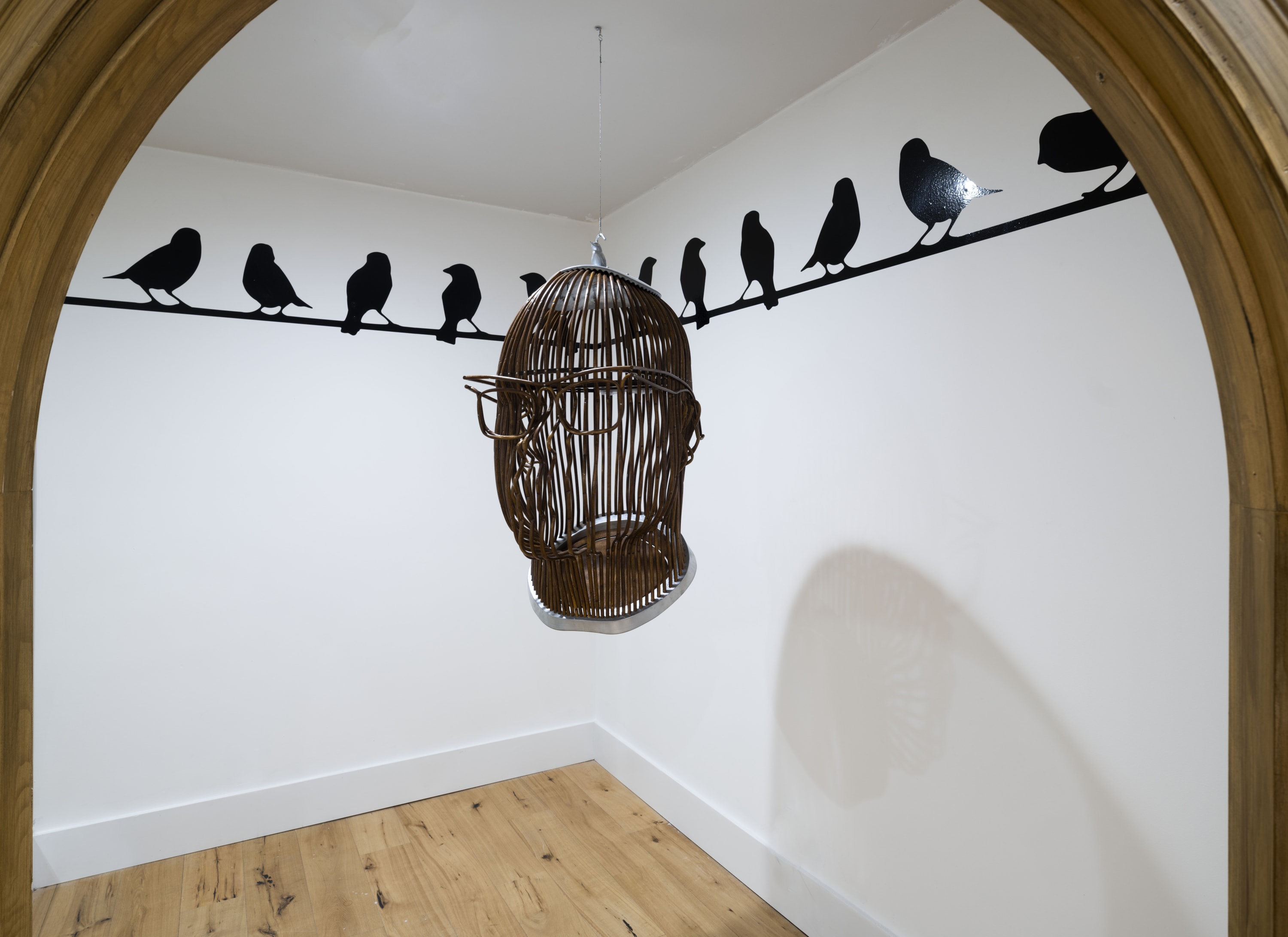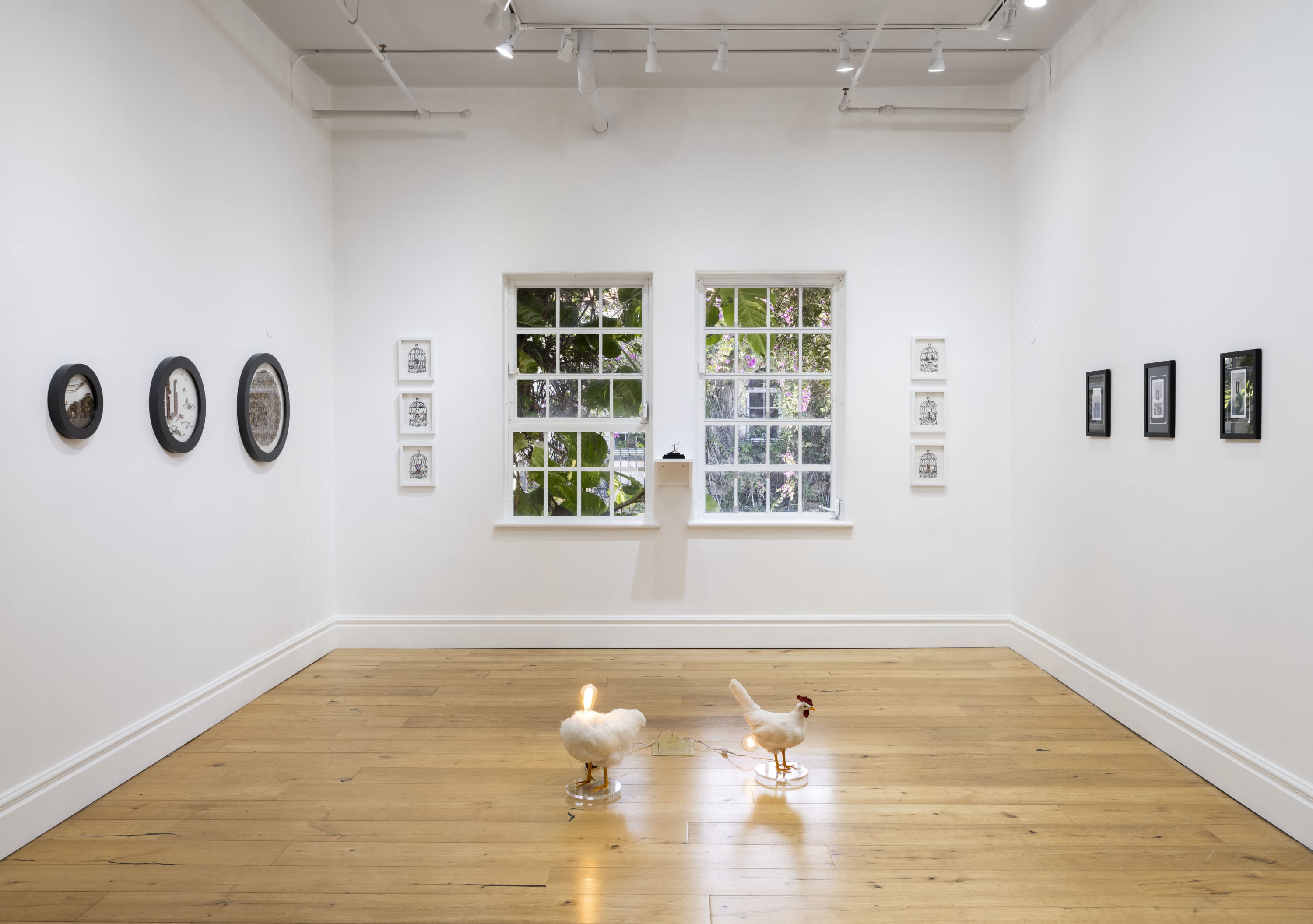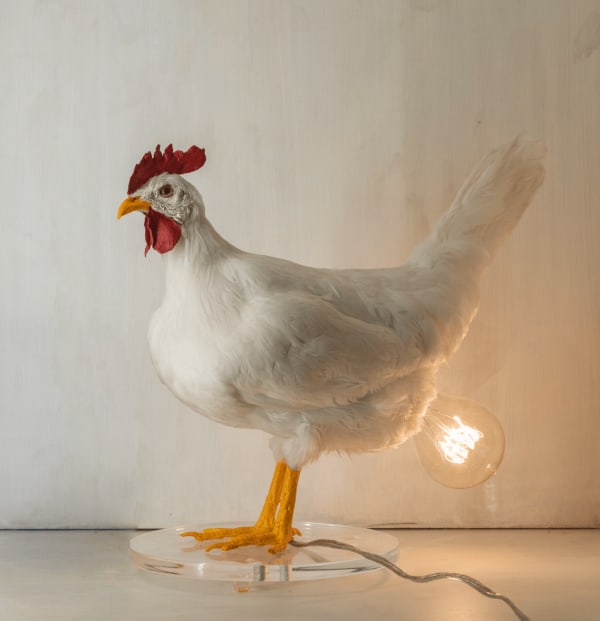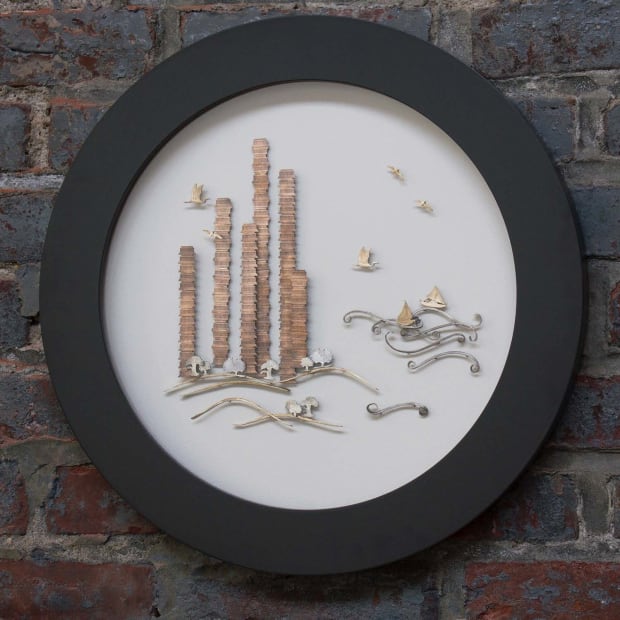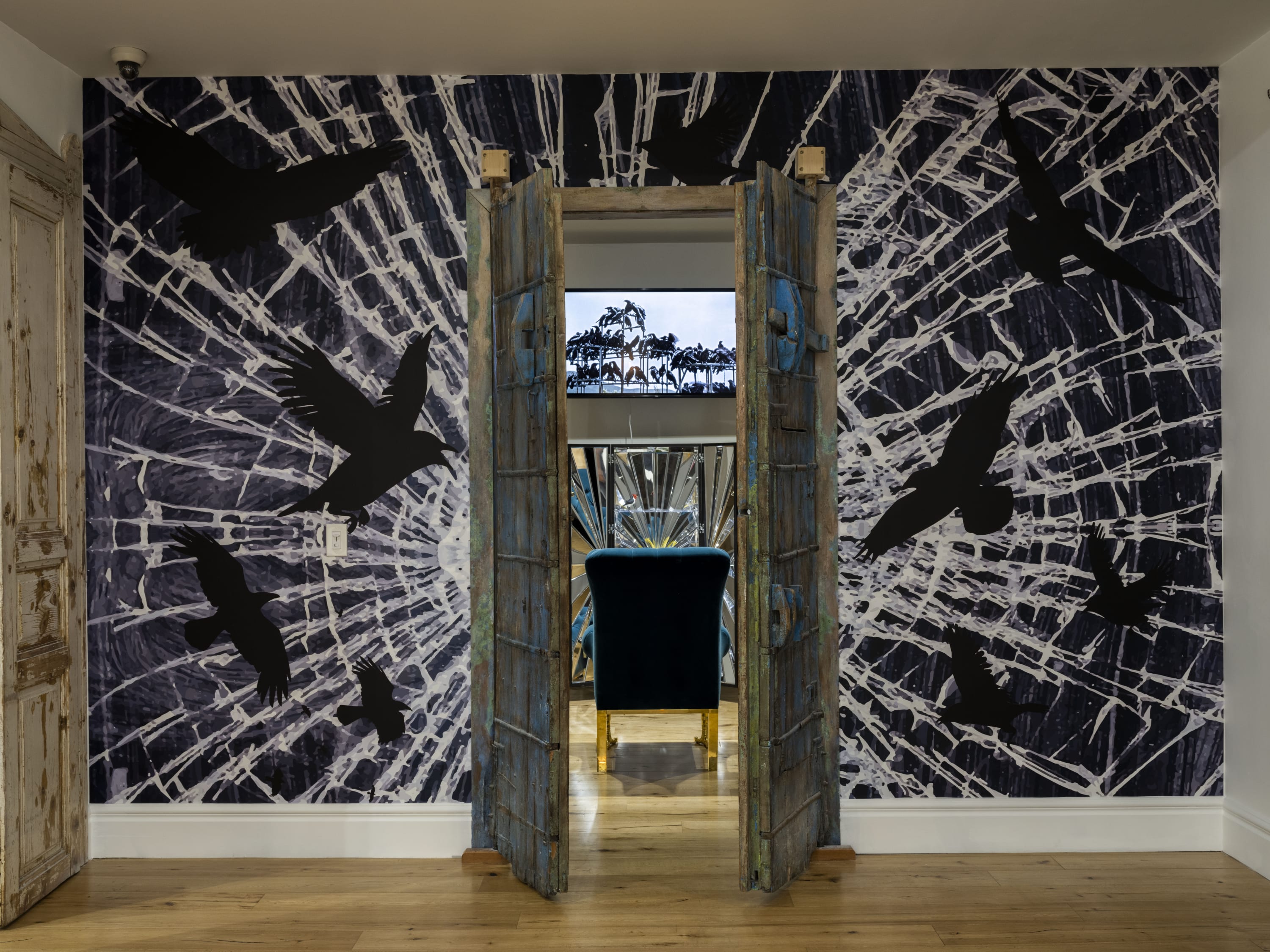Informed by the Leonard Cohen song of the same name, the exhibition takes further inspiration from Hitchcock's "The Birds," considering the film as told from the perspective of the birds. The exhibition’s themes highlight similar thematic nuances of Cohen’s song: redemption and the desire to be free from the influence of external views. This allows the viewer to escape the modern problems of society and soar high beyond surface level issues and quotidian nuisances. The exhibition also pays respect to Tippi Hedren and her animal activism which has been a pivotal driving force throughout her life and career.
Featured works date from the 1960s—including Three White Dots and Brass on Red by Alexander Calder—up to the present, namely Nate Lowman’s work that aptly utilizes the familiar satellite renderings of hurricanes to further investigate and comment on the current socio-political context surrounding the devastation caused by recent storms. While Calder’s mobile soars in its small stature like a bird in its first flight, Lowman offers a new narrative from a bird’s eye view. Karin Gulbran's Rare Bird (2021) conveys the beauty and essence of a great blue heron in their natural habitat, while Howard Fonda's paintings create striking pointillistic portraits of varying bird species. Sebastian Errazuriz's avian design creates an almost surreal depiction of finches, robins, and cardinals waiting for their moment to take off. Shinique Smith’s mixed media work And, flowers bloomed in the aftermath (2019) evokes a sense of movement and freedom, all while highlighting the tension between humanity and nature, whereas Erika Keck's painting portrays the outcome of these forces in a contained form of chaos.
Marta Martino’s mixed media series ASSEMBLAGE22 uses 1965 Rollei camera film from fashion and art projects to create work that “encompasses violent and liberating acts, including the rejection of what is known as a whole by reassembling a temporary reconciliation and gaining a new reality.” Todd Pavlisko's work examines the endless cycle of mental hovering over one’s deep desires and obsessions in a traumatic manner - which relates to the confinement of “why the caged bird sings.” Jo Shane's conceptual work Escape Mechanisms (2017) captures the sensation of the flightless search for freedom from the restrictive cage, whether bird or human, one can be held in. Hunt Slonem's Queen of Bavaria (1989) is a colorful celebration of the diversity of bird species that contrasts Samuel Richardson's paintings which act as a vantage point into the complexity of isolation from the flock. Stacey Lee Webber’s brass currency sculptures use everyday objects to create intricate scenes of birds in everyday life, and David Yepez's Raven Chair (2019) explores the mythological and symbolic significance of Edgar Allen Poe’s The Raven and Yepez's obsession with recreating the fantastic visions of the poet’s abode.
Together, the works of these artists create a thought-provoking exploration of the world of birds and their place in our ever changing world, united in their examination of what birds conceptually symbolize for humans in an array of mediums from sculpture and painting to mixed media and design. "Then birds flew up like a shower of sparks, I followed them with my eyes and saw how they rose in a single breath, until they seemed no longer to be rising but I to be falling...” ― Franz Kafka, The Metamorphosis and Other Stories


